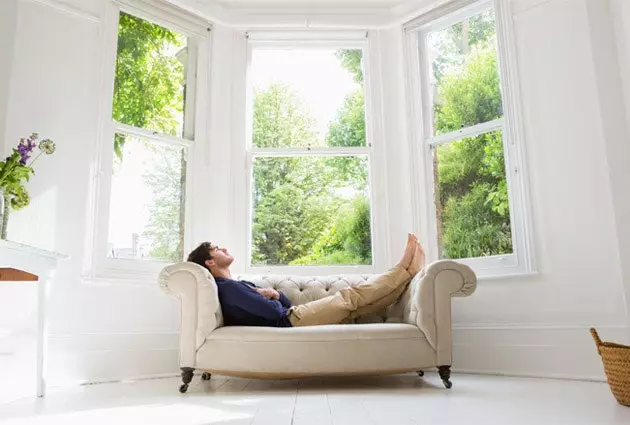
Average Spaniard enjoying his last siesta
"A typical Spanish working day begins at ten in the morning and is split in two by a two to three hour meal break known as 'la siesta' . Spaniards typically pause at two in the afternoon and They go back to work around four or five. The workday typically ends at eight," states the **Washington Post.**
Let's see, apart from the fact that we don't know anyone who calls mealtime "siesta", How many workers can actually afford to sleep on it during the week? According to a study on health and rest published by FUNDADEPS and Asocama in 2009, no more than 16% . 22% said they do it "sometimes", 3% on weekends and more than half (58%) ... Never. Down with topics, international press!
In fact, breaking down preconceived ideas can go even further: a study carried out in 2002 by the journal Neurology shows that In Germany, 22% of people take a nap after eating up to three times a week. They are closely followed by 15% of Italians and 14% of Britons. And the Spanish? In this work they appear in penultimate position, with 9% of people enjoying a midday break. The last? The Portuguese, just one point below us.
Thus, in a certain way, one could say that one of the most exportable made in Spain experiences is becoming a relic , while the rest of the world takes it as their own. In the US and Japan, for example, many companies already condition special places for employees to sleep at least half an hour and gain strength to continue with the day. In fact, according to a Pew Institute survey published in 2009, each day, 34% of Americans take a nap (which is a nap, but at any time of the day) .
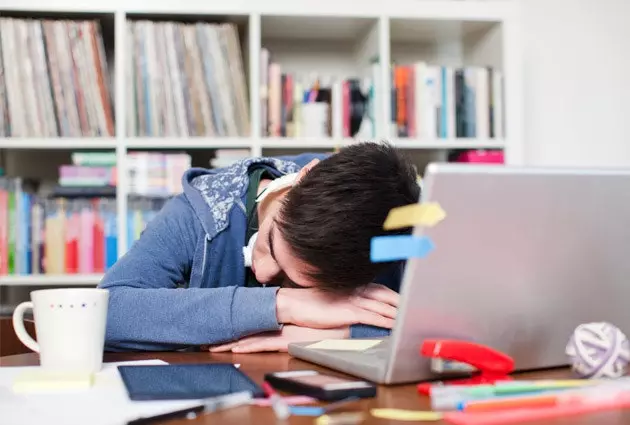
Siesta during working hours: the reality
THE PERFECT NAP
But to what extent is it necessary for this custom to be perpetuated in our country? According to the Californian University of Berkeley, a lot, because it not only helps us to rest the body; it is also used by our brain to clear and improve learning ability . However, that happens if we don't go crazy and surrender to sleep like sleeping beauties. “ The nap should last no more than 20 to 30 minutes. what is the duration of superficial sleep; if we sleep longer we enter a deep sleep and that is when, when we wake up, we have the feeling of thick head ”, says Dr. Estivill. And we all know with what face, and with what spirit, one wakes up after a three-hour nap, especially if he has to go back to work (although The Washington Post believes that this is our daily bread).
Dalí, aware of the time limitations of a good nap, had an infallible method : he took a spoon, a fork or some keys in his hand, and was about to close his eyes with it near a plate. Once his body relaxed enough, the metallic object would fall on the crockery and he would wake up as if by 'alarm art'. So, he began to paint, write, sculpt, engrave, devise... in short, any of the infinity of things that Dalí did, but, according to him, with renewed inspiration.
But let's talk about it from a scientific perspective: "A short nap increases alertness during the afternoon: we improve our performance and our cognitive abilities by between 10 and 12%", explains **Doctor Eduard Estivill **, director of the Estivill Sleep Clinic. It is recommended for any age ? The specialist has no doubt: "We should all take a nap, without exception."
"Let's examine an average nap: they're showing an animal documentary on TV after lunch, and we close our eyes; the circumstances are favorable, and we go into stage 1 sleep, which is a transition between sleep and wakefulness. After about ten minutes, we enter phase 2, a phase in which we are already fast asleep but in which, if we are awakened, we'll swear we were awake ", explains the psychologist Ainhoa Urquia.
"About 15 minutes later -he continues- we entered phase 3. We've been sleeping for almost half an hour and we just got into the important stuff . If we continue a little more, we will end the slow wave sleep in phase 4, and about 45 minutes after entering phase 4, we will be able to have REM sleep, which can last between 20-30 min. If we wake up while in REM sleep, we do so alert and attentive. A sleep cycle has been completed. It's been about 90 min. But not everyone can have an hour and a half nap, right? " (I wish!)
"Given this, good sleep hygiene would recommend do not interrupt cycles at key moments . When a short nap of about 20 minutes or half an hour is recommended, it is done to avoid a disruption of slow-wave sleep in phase 4 , which would make us wake up very sleepy, while a short nap can favor a quick rest, perhaps reaching phase 3, which would mean some repair , because there are also between 20-50% of slow waves in this phase", concludes the specialist.
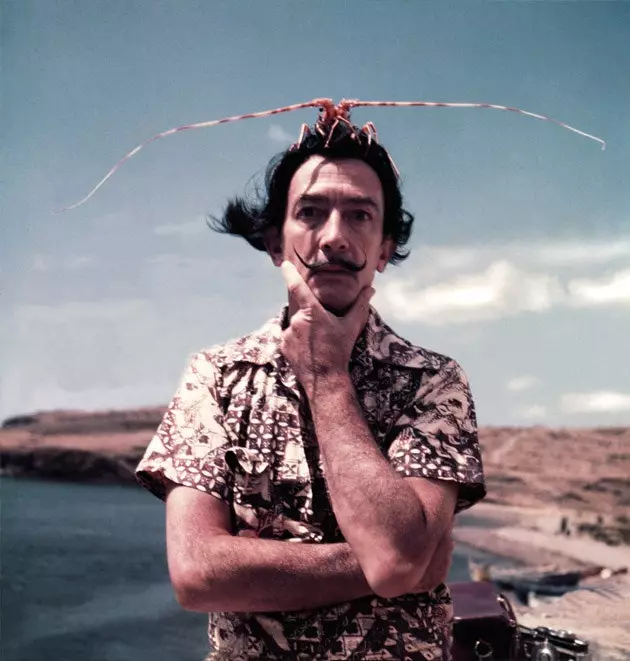
The Dalinian method of siesta works even without a mobile battery
BUT WHAT IS THE USE OF SLEEPING A SIESTA?
Popular characters like John F. Kennedy, Winston Churchill, Albert Einstein, Thomas Edison, Johannes Brahm, Napoleon, and Leonardo da Vinci were also fans of this practice. , which seems to be emerged in the eleventh century, when the monastic order of San Benito dictated rest and tranquility at the sixth hour - in Latin, the period between noon and three o'clock. According to this rule, all religious had to go to bed to regain energy , a custom that seems to have spread and began to take hold in other monasteries and among the common population.
Would the monks already know what the benefits of a good nap are? Perhaps they only sensed them; we have a better idea, especially, of what it means to carry out this tradition in the XXI century: " The demands of the environment today make us postpone our rest very lightly , interrupt cycles and not recover sleep. The siesta is, in that sense for the Spanish, the last bastion to guarantee a correct number of hours of daily rest Urquia comments.
"That is if we all take it, which we know is not the case. The dream is one more behavior, and is subject to cultural changes. In Spain we tend to extend leisure after dinner, and television programming is proof of this. This, coupled with we never recover 100% lost sleep of one night, means less sleep time for the Spanish. The problem would get worse if we didn't take a nap , at least until the strong cultural roots of this custom changed in favor of more night hours", summarizes the psychologist.
“A nap is recommended for everyone as a complement to normal sleep, but not good to replace a short sleep ”, explains sleep specialist Eduard Estivill. And he recognizes that we should pay more attention to our rest. “Sleep is the most important activity we do throughout life, a workshop of physical and psychic repair. We sleep 30% of our existence : If we reach 90 years of age, we will have slept 30. 30 years sleeping to be able to be awake for 60”, says Estivill.
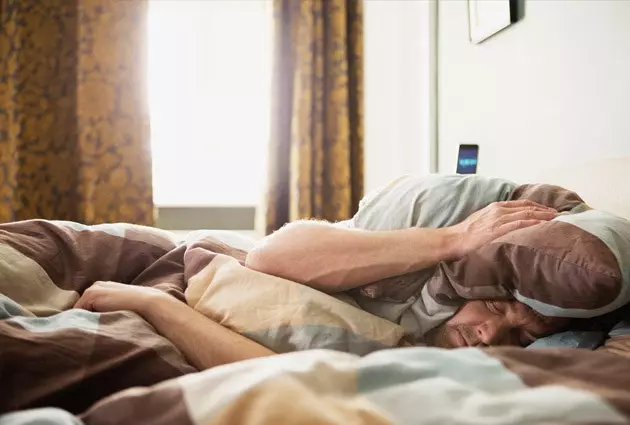
When the nap gets out of hand
IF THEY "REMOVED" THE SIESTA: WOULD WE BECOME SOUTH KOREA?
This question, which will probably seem like nonsense nonsense to you, has more than you think. "In South Korea, a country with which we share long working hours and low productivity , there is an official working day of nine hours, which includes an hour for lunch. This sometimes translates into more than twelve in reality ", begins Urquia, who studied in this country -and ** recounts her experience with large doses of humor in Objective Korea **-.
"The same situation occurs among pre-university students, who link extracurricular activities after compulsory classes until late at night. For all these reasons, nightly sleep hours are insufficient in South Korea and there is nothing that is done about it. done, Korean subways are sometimes the only source of rest for the whole day . I've seen college kids fall asleep in class, with some special cushions to rest on the table , and no one seems to care. Neither in a job does it mean dismissal immediately fall asleep, as if it could happen in some Western country," continues Urquia.
"There is a kind of unwritten consensus where it is understood that this simply happens. People in South Korea literally fall asleep in corners , and nobody puts a stop to this absence of rest as a way of life. These daytime dreams differ from the Spanish siesta in that the latter does have its specific time of day, with its assigned time and its ritual, which allows to take advantage of it "says the professional.
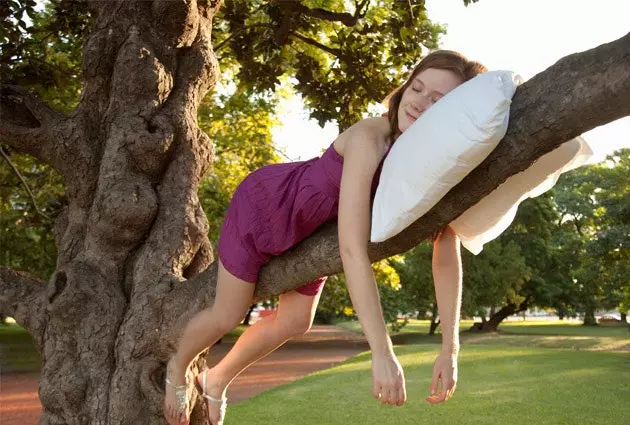
People sleeping "literally anywhere"
*You may also like...
- Tourist siesta manual
- 15 beds to sleep under the stars
- 22 things you miss about Spain now that you don't live here
- How to sleep on a plane: when the hotel is seat 11D
- Do you want to sleep in a taxi in New York?
- Sleep hanging on the heights
- All articles by Marta Sader
